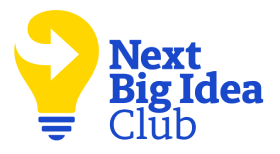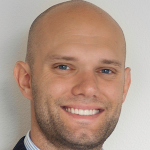Maggie Smith is a poet and a New York Times bestselling author of eight books of poetry and prose. Her poems and essays have appeared in the New York Times, The New Yorker, The Best American Poetry, The Paris Review, The Atlantic, and many other journals and anthologies.
What’s the big idea?
We are all creative beings because making your life is the ultimate creative act. For those who choose to tune their senses as artists, there are ten key principles to improving your craft. The societal value of dedicating oneself to a life creating art rests in our essential human need for hope, healing, and a search for answers about our world and ourselves amid a sea of ambiguity.
Below, Maggie shares five key insights from her new book, Dear Writer: Pep Talks & Practical Advice for the Creative Life. Listen to the audio version—read by Maggie herself—in the Next Big Idea App.
1. Creativity is our birthright as human beings.
I think everyone is born a poet. Years ago, I agreed to visit my children’s elementary school for a few days to talk to second graders about poetry and preparation. I got a sneak peek at the language arts textbook they were using in the poetry unit. The authors described poets as having a special ability to see the world in a poetic way. “Poet’s eyes,” they wrote, even suggesting that teachers wear an oversized pair of silly glasses during poetry lessons. On my first day, I told the kids that there’s no such thing as poet’s eyes.
Every child is born with poet’s eyes. We all have them. Poetry comes naturally to children because they haven’t been estranged from their imaginations and their sense of newness in the world. As we age, we can become distracted and desensitized. We have to pay better attention, but more than that, we have to find ways to make the familiar strange again; to see the extraordinary tucked inside the ordinary.
Poet’s eyes are for all of us. After all, everyone is creative. Even if you don’t make art, even if you’re not a writer, photographer, or musician, you are creative every day in your work and in your life. Problem solving is a creative act. Conversations are creative. Parenting is creative. Falling in love, leaving your job, and changing your mind are all creative acts. Creativity isn’t just about making art. Making your life is the ultimate creative act.
2. Attention is a form of love.
What we turn our gaze to feels that warmth and light. What we dedicate ourselves to feels cherished. And conversely, what we ignore feels slighted, neglected, and devalued. This essential part of creativity requires no pen, no paper, no paints, no canvas, no nothing, only your awareness. Your hands can be empty, but your mind should be open.
As I was thinking my way into how to write Dear Writer and talk about creativity in a way that makes it accessible for everyone, I sat down and made a long list on a legal pad. That list included words like curiosity, courage, trust, patience, gumption, improvisation, love, and so on. Looking at this unwieldy list, I started winnowing it down, prioritizing the terms that appealed most to me and seemed the most expansive. I eventually narrowed the list to ten principles of creativity.
10 Principles of Creativity
- Attention
- Wonder
- Vision
- Surprise
- Play
- Vulnerability
- Restlessness
- Connection
- Tenacity
- Hope
All ten are essential, but attention comes first for a reason. I can’t think of anything more important for a writer or artist than to be a sensitive, finely tuned instrument in the world. Keep your antenna raised. We need you to be all in.
Life’s everyday activities create static—a constant hum of responsibility, news, reminders, and encounters. Our work is to dial past that static to hear the quiet voice inside us. Some artists call this voice the muse. You can call it whatever you like. For writers, the quiet voice inside might whisper a line of a poem or a bit of description or dialogue, but that voice has things to tell us about our lives too if we tune in and listen carefully.
The world is a complicated place full of both beauty and horror. But even when the world lets me down, even when it isn’t what I want it to be, I find things to love and to be grateful for. I pay attention. My kids and I do our best to focus on beauty. In our house, it’s not unusual to hear one of us shout, “Beauty emergency!” A beauty emergency is what we call something that stops you in your tracks, something you have to look at right away before it’s gone. It might be a fiery pink and orange sunrise or an albino squirrel in the sycamore tree or snowflakes that seem to be falling in slow motion. If you take your time getting to the window, the sunrise might be pale peach. The white squirrel might be gone. The snow turned to sleet.
“Wonder is the opposite of cynicism.”
The wonder is the key here. There’s no creativity without it. Wonder is the opposite of cynicism. It’s warm and enthusiastic. While cynicism is chilly and bored, wonder is shushing everyone. Wonder says wow, and cynicism replies so what?
Creativity requires us to pay attention and approach the world with wonder. Many of my poems were made possible only because I took the time to look at my surroundings: listen to the wind and the birds, touch leaves to know their textures, breathe deeply to describe what the autumn air smelled like. Being sensitive, attuned, and observant. These things don’t just improve your writing. They improve your life.
3. Art changes us.
Above all, I think we come to art to be changed. We come to books, films, music, and visual art to be expanded. Unzipped like a suitcase made larger on the inside, able to accommodate even more living. Creativity is the great expander. When you read a poem or listen to a song or watch a play, you are not the same person. Afterward, you’re slightly rearranged. Your DNA is still the same. Your fingerprints are still the same. You look the same in the mirror, but you aren’t exactly who you were. Be careful. I might tell someone when handing them a book or a record, “You will be different after this.” Years spent with art are years spent in cocoon after cocoon, always emerging changed.
Books are community gathering spaces where connection is inevitable. When I read a book, I enter a place another writer has made. I can leave, but not entirely. I take the place with me when I go. Once a piece of art is inside you, it will continue to do its work on you for the rest of your life.
Think about the music you listen to, the films you return to, how they move you, help you see things in a new way, or just make your day better. Imagine if those musicians, actors, artists, and writers never shared that work. You would be different. Your life would be smaller, less vibrant. Without their art, your life would be diminished without the transformation that their art made possible.
4. Every no makes room for a yes.
Once upon a time, when I first began submitting poems to journals, rejections arrived in the mail. These days, it’s usually an impersonal email that an editor selects from a dropdown menu in the journal’s online submission system. Working for a literary magazine has helped me see rejection in a new way. I know how much stunning, worthy work is in that submission queue, and I know how little room we have to publish it. The decisions are sometimes excruciating. A no is a subjective no to one specific batch of work at one specific moment in time by one particular reader for a variety of reasons. A no is not a blanket rejection of you. It’s not even a rejection of your work as a whole or your worth as a writer. It’s not a no to your talent.
Every no makes room for a yes. I tell my students that almost all of my poems were rejected before they found a home at a magazine. “Good Bones,” my most famous poem, was rejected by the first few print magazines I sent it to before it was published by the online journal Waxwing. Those early rejections stung, but those early rejections were a gift. If “Good Bones” had been published in print, it wouldn’t have gone viral. Meryl Streep wouldn’t have read it at Lincoln Center. It wouldn’t have been featured on the CBS show Madame Secretary. It would have had a much smaller life.
“A no is not a blanket rejection of you.”
We are all playing the long game, and the only way to fail at the long game is to give up. We keep going and remember that sometimes failures clear a path for something better.
5. Creating is inherently hopeful.
I think of each poem, each essay, each book I write as a message in a bottle. I don’t know when I toss it into the waves, what shore it might wash up on, or when, or who might be standing on the shore to receive it. I don’t know if they’ll pull the message out or if they’ll overlook the bottle altogether. If they do read it, I don’t know what they’ll think. Will they understand? Will they receive the creation in the way I hoped anyone would?
To make things that don’t exist yet and don’t need to exist is the very definition of art, and to send them out into the world is wildly and practically and gorgeously hopeful in harrowing times. And what times have not been harrowing?
Sometimes I ask myself, what can a poem do? A poem isn’t a tourniquet when you’re bleeding. It’s not water when you’re thirsty or food when you’re hungry. A poem can’t protect you from violence or hate. It can be difficult to create—to paint, to sculpt, to compose—when your work feels like it’s not doing enough, when it can’t do the real, tangible work of saving lives or making people safer. But art can do real, transformative work inside us. Think about art that has become an important part of your life: the songs you love, the books you treasure, the films you quote line for line. Art isn’t extra. It’s necessary.
“Art can do real, transformative work inside us.”
Art isn’t life’s decoration, but its framework. I know what some people would say: Wow, she really thinks being an artist is as important as being a doctor, a farmer, a firefighter. But I have been fed and healed and saved by art, by someone else’s hope sent out into the world, when it washed up on my shore. This is not hyperbole. Art is essential.
Our work as artists isn’t to solve the world’s problems, but to articulate the problems. Not to answer every question, but to use wild hope to ask and keep asking. Only by engaging with ambiguity can we make art that feels true.
Enjoy our full library of Book Bites—read by the authors!—in the Next Big Idea App:










